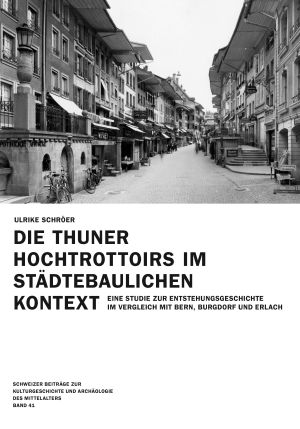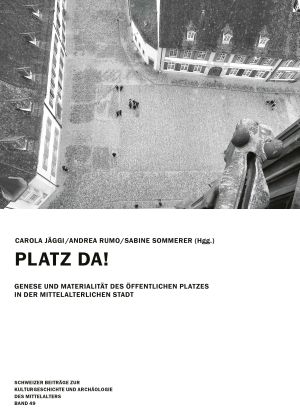Windler, Renata
Die Thuner Hochtrottoirs im städtebaulichen Kontext: Eine Studie zur Entstehungsgeschichte im Vergleich mit Bern, Burgdorf und Erlach
The specific character of the Obere Hauptgasse in Thun is shaped by its unusual cross section. Ground floors known as raised pavements, arcades or terraces jutting out on both sides form a row of two-storey shops. Whether this was planned, or whether it resulted from the construction type or just by coincidence, the background of this streetscape that stands out from the otherwise anonymous urban development has never before been investigated in detail, despite its quaintness and originality. The question is whether the phenomenon of the double access was a very early example of this type of architecture, a consequence of a later development or even a product of urban planning.
Due to the fragmentary nature of the architectural contexts and an incomplete evidentiary background, it has not yet been possible to firmly establish the origins of Thun’s raised pavements. While the investigation uncovered evidence to suggest that the street gradient had been altered, it was not possible to provide irrefutable proof of this. Even the date proposed for the initial construction of the raised pavements in the 16th/17th centuries seems rather vague. What is certain, however, is that today’s homogenous appearance is in fact based on complex causes and decisions.
Platz Da! Der öffentliche Platz in der mittelalterlichen Stadt
Many recent publications have dealt with medieval town squares as public spaces and stages to assert political power, and as “theatres” of ritual and social interaction. This volume comprises 16 presentations held at a conference in Zurich in 2017.
Researchers have, at times, lost sight of the genesis and materiality of public squares in the towns and cities concerned. Rarely have they asked when, where and by whom were the squares created; what components were used to demarcate them; how were they accessed; how were the surfaces reinforced; and how did their physical appearance change over the centuries?
The theme of the conference was the public square as a physical component of the fabric of a medieval town or city. Individual towns and cities were looked at as separate units of study whose undeveloped areas were then compared in terms of their genesis and how they functioned within the urbanistic context. It goes without saying that both archaeological contexts and historical sources were consulted.








